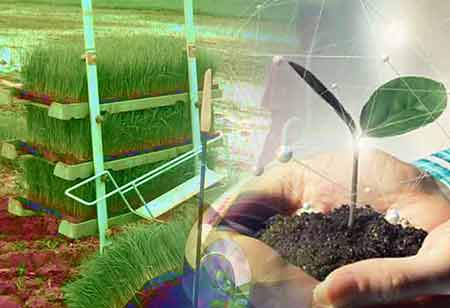Thank you for Subscribing to Agri Business Review Weekly Brief
Significance of Aquaculture
There has never been more demand on the earth to expand food production.

By
Agri Business Review | Monday, May 09, 2022
Stay ahead of the industry with exclusive feature stories on the top companies, expert insights and the latest news delivered straight to your inbox. Subscribe today.
Aquaculture has numerous climatic benefits, including carbon sequestration and the production of eco-friendly products.
FREMONT, CA: A global population of 9.3 billion in 2050 will require a 60 percent increase in food production. Due to climate change and its influence on existing food production systems, there is significant pressure to fulfill the expanding food security and nutritional demand.
There has never been more demand on the earth to expand food production. There is a projection that this pressure will increase by 60 percent over the next few decades. In addition, climate change threatens global agricultural systems, raising important questions about food security, livelihoods, and human nutrition.
As these various forces squeeze the earth, people must rethink how they feed people and maintain the environment - vastly diversifying crops, enhancing farming processes, and carefully selecting locations for food production. It is no longer merely a matter of hedging bets to ensure output matches demand; it has become an absolute necessity for already stressed and overworked food production systems.
Marine aquaculture, the cultivation of plants and animals in oceans, is an essential food source and, according to a study, an emerging climate change remedy. Despite this, it is sometimes overlooked in broader discussions about developing a regenerative, nature-positive food system, partly because of the perception that it has a history of environmental destruction. But substantial developments in technology and methods have made it possible to operate the industry responsibly, and aquaculture has the potential to restore ecological health and enhance human well-being.
Reimagining how and where people raise food could make all the difference for the future of the planet's climate. It is time to begin working.
A robust food system
Currently, producing the great bulk of food requires land. There's nearly all of the world's arable land. Although the ocean covers roughly three-quarters of the earth, it produces only 2 percent of the food. There is room to expand.
Aquaculture in maritime areas permits three-dimensional agriculture (think: stacking one farm on top of the other). According to a study, if people raised seafood instead of land-based meat to satisfy the rising need for protein, they could save an area of land twice the size of India. In addition, farming seafood instead of the majority of other animal proteins saves a substantial amount of carbon: Most farmed seafood emits around one-tenth as much carbon dioxide as beef.
Aquaculture can help food systems better endure and recover from the effects of climate change that people are already seen, such as severe droughts. Producing a diversity of foods that react differently to environmental changes is one method for achieving this goal. Aquaculture in the ocean contributes to a diverse, resilient food supply. Since it is affected differently than land-based agriculture by air temperature, precipitation, and soil variations, this technology can help food-producing communities become more resilient.





